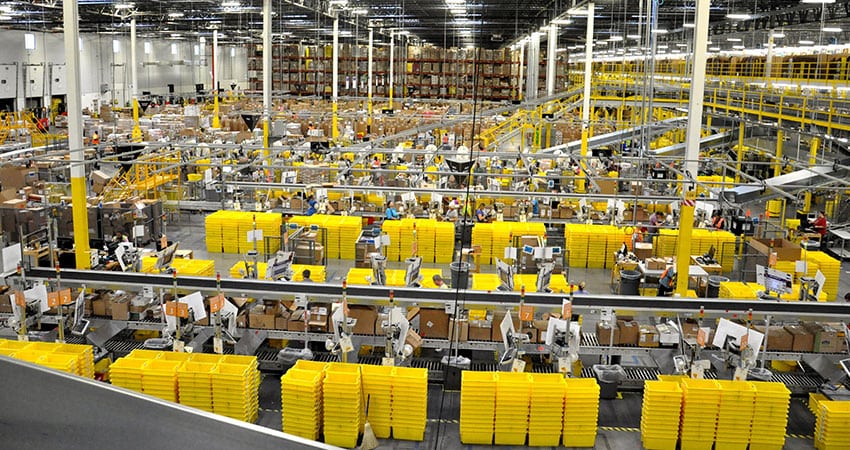The community of Amazon entrepreneurs is increasingly interested in the dropshipping business model, which involves acting as an intermediary between customers and suppliers. This method has gained popularity due to its ease of setup and the potential for profitability. In dropshipping, the seller identifies potentially interesting products from other sellers or manufacturers, adds them to their listings on platforms like eBay, and raises the prices. When a buyer places an order and pays on Amazon, the seller forwards the order to their supplier and pays the wholesale price. The supplier then fulfills the order, often without the customer realizing that the goods originated from the manufacturer. Let’s discuss!
Advantages of Dropshipping: Easy Setup, Lower Costs, and Flexible Operations
Dropshipping offers several benefits that make it an attractive business model for aspiring entrepreneurs. One major advantage is that there is no need to purchase large quantities of goods or maintain inventory. This significantly reduces upfront costs and eliminates the risk of being left with unsold inventory. Since the seller does not handle the products directly, setting up a dropshipping business is relatively easy compared to traditional retail models. Additionally, in the event of a return request, the seller can simply return the product to the supplier and receive a refund, avoiding any financial loss.

Another advantage of dropshipping is the ability to operate the business from the comfort of one’s home. Entrepreneurs can order goods from suppliers located in the United States, pay for them, and specify the Amazon buyer’s address as the delivery destination. Profits from sales can be received on a bank card through services like Payoneer, offering convenience and flexibility.
Leveraging Existing Demand: The Power of Dropshipping on Amazon
One of the key benefits of dropshipping is the opportunity to work with a wide range of products that are already being sold on Amazon.
- This means that entrepreneurs can tap into existing demand without having to create their own unique products or brands.
- By leveraging the popularity and reach of Amazon’s platform, dropshippers can focus on marketing and customer acquisition.
Amazon’s Guidelines: Key Considerations for Dropshippers
It’s important to note that while dropshipping is generally acceptable according to Amazon’s policies, sellers must adhere to specific guidelines. It is crucial to familiarize oneself with these guidelines to avoid any potential issues or violations.
However, dropshipping is not without its drawbacks.
- One of the main challenges is the lack of quality control. As a dropshipper, you rely on the supplier to deliver high-quality products, and it can be difficult to thoroughly assess the quality of each item. Since the products are shipped directly from the manufacturer to the customer, the seller has limited control over the product’s condition and packaging.
- Furthermore, dropshippers may encounter issues with late deliveries. Without direct control over the supplier’s warehouse or shipping processes, there is a risk of experiencing delays or cancellations, which can lead to customer complaints and negatively impact the seller’s reputation.
Finding Reliable Suppliers: Research and Platforms for Success
When it comes to finding suppliers, it is advisable to start by identifying the products you want to sell on Amazon. Conduct thorough research and look for reliable suppliers on platforms like eBay, Walmart, and other reputable resources. It can be helpful to choose suppliers with positive reviews and a proven track record of delivering quality products and services. In addition to independent research, you can also seek assistance from platforms like Amaz.Markets, where managers are available to provide guidance and support in finding reliable suppliers.
For beginners in dropshipping, it is crucial to choose products strategically. Look for products that are not branded or patented to avoid any legal complications. Opt for lightweight and small items to keep shipping costs low, especially when it comes to returns. Before selling any products, it is recommended to order them from the supplier and personally evaluate their quality. Request relevant documents from the supplier to ensure the authenticity of the goods and to avoid selling counterfeit products. Lastly, it is advisable to avoid choosing fragile items as they are more susceptible to damage during shipping, which can lead to customer dissatisfaction andnegative reviews that could impact your seller rating.
Summing up
In conclusion, dropshipping offers a compelling business model for entrepreneurs interested in selling products on platforms like Amazon. By acting as an intermediary between customers and suppliers, sellers can avoid the need for inventory and upfront investments, making it an accessible option for beginners. However, it’s important to keep in mind the potential drawbacks, such as limited quality control, uncertainty regarding packaging and additional materials, and the risk of late deliveries. By carefully selecting suppliers, choosing the right products, and adhering to Amazon’s guidelines, entrepreneurs can navigate these challenges and build a successful dropshipping business.
7



Hello i am interested to do dropshipping. can you assist me to start? thanks
Feel free to ask !